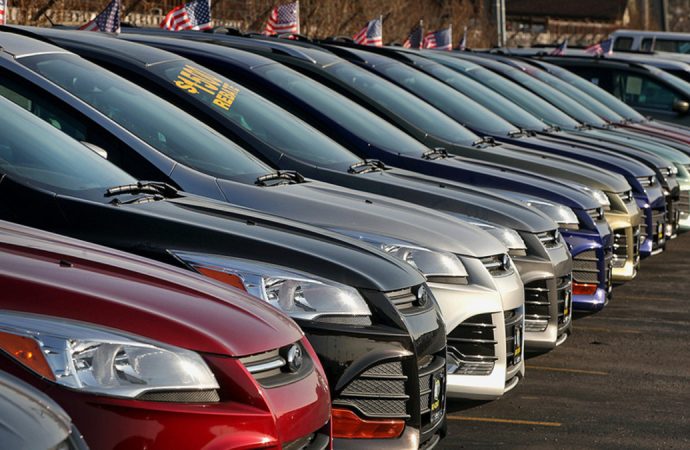China’s automotive industry has evolved rapidly over the past few decades. Once known primarily for producing low-cost imitations of foreign cars, Chinese automakers are now gaining recognition for their innovative designs and technological advancements. This transformation has been driven by a combination of government policies, increased investment in research and development, and a new generation
China’s automotive industry has evolved rapidly over the past few decades. Once known primarily for producing low-cost imitations of foreign cars, Chinese automakers are now gaining recognition for their innovative designs and technological advancements. This transformation has been driven by a combination of government policies, increased investment in research and development, and a new generation of designers who are redefining what a Chinese car can be. This article explores the journey of China’s automotive design, the factors behind this shift, and the future prospects of Chinese cars on the global stage.
Historical Context: From Imitation to Innovation

This image is taken from google .com
In the early stages of its automotive industry, China was notorious for its copycat designs. Manufacturers often produced vehicles that closely resembled popular models from international brands, both in appearance and function. This strategy allowed Chinese companies to quickly enter the market and offer affordable alternatives to foreign cars. However, this approach also led to a reputation for poor quality and a lack of originality.
The turning point began in the mid-2000s when the Chinese government started to emphasize the importance of innovation and quality in its industrial policies. This shift was part of a broader effort to move the country up the value chain and reduce its dependence on low-cost manufacturing. Incentives were introduced for companies that invested in research and development, and partnerships with foreign firms were encouraged to facilitate technology transfer.
Government Policies and Investments
The Chinese government has played a crucial role in the transformation of the automotive industry. Policies such as the “Made in China 2025” initiative have prioritized the development of high-tech industries, including automotive manufacturing. This initiative aims to make China a global leader in areas like electric vehicles (EVs), autonomous driving, and smart manufacturing.
Significant investments have also been made in infrastructure to support the growth of the automotive industry. For example, China has built extensive networks of charging stations to support the widespread adoption of electric vehicles. Furthermore, state-owned enterprises and private companies have received substantial funding to develop new technologies and improve production processes.
The Role of Design Schools and Education
Another critical factor in the evolution of Chinese car design has been the improvement in design education. Top design schools in China, such as the Central Academy of Fine Arts and the China Academy of Art, have started offering specialized programs in automotive design. These programs are often developed in collaboration with international institutions, ensuring that students receive a world-class education.
Graduates from these programs are bringing fresh ideas and perspectives to Chinese automakers. They are no longer content with merely copying foreign designs; instead, they are pushing the boundaries of what is possible and creating cars that are uniquely Chinese. This new generation of designers is also more attuned to global trends and consumer preferences, allowing them to create vehicles that can compete on the international stage.
Collaboration with International Designers
Chinese automakers have increasingly sought collaborations with renowned international designers to enhance their design capabilities. These partnerships have led to a cross-pollination of ideas and have helped Chinese companies to adopt best practices from the global automotive industry. For instance, companies like Geely and NIO have hired former designers from European luxury brands to lead their design teams.
These collaborations have resulted in a noticeable improvement in the aesthetic appeal and quality of Chinese cars. The influence of international designers can be seen in the sleek lines, modern interiors, and attention to detail that characterize many of the latest models from Chinese manufacturers.
Technological Innovations
Innovation in design is not just about aesthetics; it also involves integrating cutting-edge technologies. Chinese automakers have been at the forefront of developing electric and autonomous vehicles. Companies like BYD, XPeng, and NIO have introduced models that incorporate advanced features such as long-range batteries, sophisticated driver-assistance systems, and smart connectivity.
Electric vehicles, in particular, have become a key area of focus for Chinese designers. The design of EVs allows for greater flexibility in terms of interior space and layout, as they do not require traditional internal combustion engines. This has led to the creation of innovative designs that prioritize comfort, convenience, and sustainability.
Case Studies: Leading Chinese Car Designs
Geely
Geely, one of China’s largest automakers, has made significant strides in design innovation. The company’s acquisition of Volvo in 2010 provided access to world-class design and engineering expertise. Geely’s recent models, such as the Preface and Xingyue, showcase a blend of European sophistication and Chinese cultural elements. These cars are characterized by their elegant exteriors, luxurious interiors, and advanced technology.
NIO
NIO, a pioneer in the electric vehicle market, has gained international acclaim for its stylish and futuristic designs. The company’s flagship model, the NIO ES8, features a minimalist interior, cutting-edge digital interfaces, and unique design elements like a floating center console. NIO’s design philosophy emphasizes user experience and sustainability, reflecting the brand’s vision of the future of mobility.
BYD
BYD has emerged as a leader in the electric vehicle segment with its innovative designs and technology. The BYD Han, for instance, combines sleek aerodynamics with a high-tech interior that includes a rotating touchscreen and advanced driver-assistance systems. BYD’s focus on design and innovation has helped it to establish a strong presence in both domestic and international markets.
Comparative Analysis: Chinese vs. International Car Designs
Aesthetic Appeal
| Criteria | Chinese Cars | International Cars |
|---|---|---|
| Exterior Design | Sleek, Modern, Influenced by International Trends | Diverse, Brand-Specific Styles |
| Interior Design | Minimalist, High-Tech, Focus on User Experience | Varies Widely, Often Luxurious and Feature-Rich |
Technological Integration
| Criteria | Chinese Cars | International Cars |
|---|---|---|
| Electric Vehicles | Advanced, Long-Range Batteries, Extensive Charging Infrastructure | Leading Brands (Tesla, etc.), High Adoption in Europe and North America |
| Autonomous Driving | Rapid Development, Government Support, Pilots in Urban Areas | Advanced in U.S. and Europe, Regulatory Challenges |
Market Position
| Criteria | Chinese Cars | International Cars |
|---|---|---|
| Domestic Market Share | Dominant, Rapid Growth in EVs | Strong Presence, High Brand Loyalty |
| International Expansion | Increasing, Strategic Partnerships, Competitive Pricing | Established Global Brands, Strong Reputation |
Challenges and Opportunities
While Chinese automakers have made remarkable progress, they still face several challenges. Quality perception remains a significant hurdle, particularly in international markets where Chinese cars are often viewed with skepticism. Building a strong brand identity that resonates with global consumers is another critical challenge.
However, the opportunities for Chinese automakers are substantial. The global shift towards electric and autonomous vehicles presents a unique opportunity for Chinese companies to establish themselves as leaders in these emerging markets. The continued support from the government and the ability to leverage cutting-edge technology will also be crucial in driving future growth.
Analysis Table
| Aspect | Early Stage (Imitation) | Current Stage (Innovation) |
|---|---|---|
| Design Approach | Copying foreign models | Original designs with unique Chinese elements |
| Government Role | Limited involvement | Strong support and investment in R&D |
| Education | Limited design programs | Advanced design schools and international collaborations |
| Technological Integration | Basic, often outdated technology | Advanced EVs, autonomous driving, smart connectivity |
| Market Perception | Low quality, lack of originality | Improving quality, growing global recognition |
| International Presence | Minimal | Expanding rapidly with strategic partnerships |
Comparative Table
| Criteria | Chinese Cars | International Cars |
|---|---|---|
| Exterior Design | Modern, sleek, often influenced by international trends | Diverse, brand-specific styles |
| Interior Design | Minimalist, high-tech, user-focused | Varies widely, often luxurious and feature-rich |
| Electric Vehicles | Advanced, long-range batteries, extensive charging infrastructure | Leading brands (Tesla, etc.), high adoption in Europe and North America |
| Autonomous Driving | Rapid development, government support, urban area pilots | Advanced in the U.S. and Europe, regulatory challenges |
| Domestic Market Share | Dominant, rapid growth in EVs | Strong presence, high brand loyalty |
| International Expansion | Increasing, strategic partnerships, competitive pricing | Established global brands, strong reputation |
China’s automotive industry’s shift from imitation to innovation marks a significant milestone in its industrial development. With continuous support from the government, advances in design education, and a focus on technological innovation, Chinese automakers are poised to become formidable players on the global stage.
Conclusion
The transformation of China’s automotive industry designers from imitation to innovation is a testament to the country’s ambition and capabilities. Through a combination of government support, investment in education, international collaborations, and technological advancements, Chinese automakers are redefining what it means to drive a Chinese car. As they continue to innovate and push the boundaries of design, there is no doubt that the world will be seeing more Chinese cars on the roads in the years to come.
















